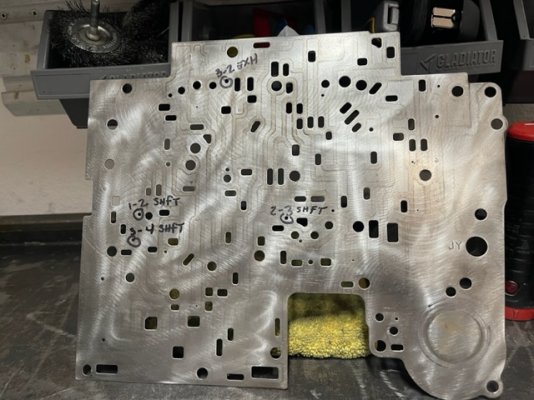While I have no input on the 80
I do have a couple theories on failure modes on the 60s. Nothing I can prove, but, observations of failures and maintenance habits from reading pages of threads
- Old fluid: Gets acidic. Acid = high affinity to give hydrogen atoms up. Or to phrase it differently, push hydrogen atoms where they shouldn't be. Hydrogen embrittlement of steel / alloys is pretty well documented. See: sunshell failure. It breaks riiiight around where it would either be work hardened, or explicitly tempered.

aeroenginesafety.tugraz.at
- High temps: The temperature sensor on these is located in the pan. The trans cooler returns to the pan. This means that what the temp sensor sees is effectively the 'coolest' fluid in the unit - before it's been subjected to work. Actually it might be after it goes through the pump but regardless.... The thing's dunked in pan fluid. Couple that with the kind of anemic stock cooler and the transmission warmer in the radiator..... Well, I've seen mine hit 220-230 in traffic before I threw an aftermarket cooler on. It's probable that local hotspots in the unit were warmer than that.
- Temps pt2: I put a trucool40k on mine. Also have my efans mapped to turn on at a lower temperature. My fluid generally runs around 90-110 degrees in the winter, and like, <135 in the summer unless we have a flaming hot 110 degree day. Then it's in the mid 140s. But regardless, way lower than stock. And also well below documented embrittlement temps in the article I posted above.
- Corvette servo. More grip pressure, less slip. It's like a 15 minute install. Just... Put the seals on, assemble the thing, THEN put it back in. Don't try to slide the cup over the seals on install or you'll pinch them. Oh, and check no less than 6 times that it's actually seated all the way. It's real easy to feel like it's situated all the way in. But only halfway on. If it conks out sideways under pressure, that's casing-cracking territory.
- External filter. The stock pickup-tube-filter-thing is a rock catcher. Not an actual filter. I use magnefine on mine, located on the 'hot' side before the cooler so it catches the fluid while it's thinner/warmer. Has a bypass valve inside so there's minimal (not none, but minimal) obstruction to flow. Can snag some pics of location/orientation if you'd like
- Tune it. No, seriously. Crisp up the shifts, raise the shift points up a hair. Pull timing during shifts (reduce torque). Firmer shifts - less slip. Higher shift points - trading torque for RPM and keeping some load off. Pull timing during shifts - why make a shift with full engine torque? Just un-needed wear and tear.
- Extra magnet in the pan as per TSB # 08-07-30-040B.
https://ls1tech.com/forums/attachme...350568544-new-turbo-gxp-service-bulletin-.pdf
- Keep the fluid changed. I drain/fill mine once a year through the dipstick. Mityvac or similar makes it easy. ~3qts. I use amsoil signature atf (black bottle, red label). I skipped on the 'fuel saver' which is a bit thinner (black bottle / blue label).
And... well... Like I said, I can't prove any of this. But I just ticked over 175k on mine this morning and it still shifts around better than the dude selling pocket watches behind the movie theater dumpster. Hopefully my ramblings were at least useful on care and feeding of these things

